
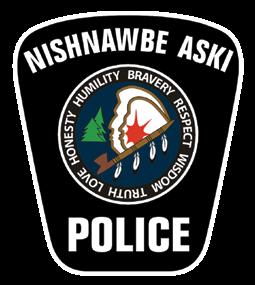
CHIEF’S MESSAGE
2019 marked the 25th year of operations for the Nishnawbe Aski Police Service. The past leaders of Nishnawbe Aski Police will most certainly say there have been many tumultuous hardships, hardships such as; securing proper infrastructure for police detachments, procuring proper equipment for offcers to perform their duties and securing appropriate funding to support operations.
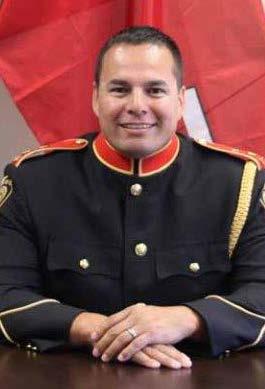
Upon refection of the past 25 years, there have been tragedies but there have also been many successes. When one looks back on the 25 years, the one main reason why Nishnawbe Aski Police Service is still in operation is; there is a strong belief from the frst group of core offcers who have been part of this Police Service since its inception that Nishnawbe Aski Police Service is a vital component to the safety of our Nishnawbe Aski Nation communities.
With the development of our new strategic plan, management went back to our core, “our great employees work for our police service”. Management brought in a cross section of our civilian and police offcers of all ranks who have contributed to the success of Nishnawbe Aski Police. Through these consultative strategic development sessions management heard what should be our focus for the duration of our strategic plan.
Over the next few years our strategic plan will focus on; “how to recruit, how to retain and train our employees”. In addition to these 3 areas of focus the last focal point of our strategic plan will be on; “our employee’s wellness”. The “Tepee*” was chosen as the structure for our strategic plan as the Tepee is very symbolic to our Indigenous culture. Along the base of the Tepee are the traditional values of honesty, wisdom and respect, on each corner are; love, truth and humility and the last traditional value, Bravery is placed within the Teepee.
NISHNAWBE ASKI POLICE SERVICE
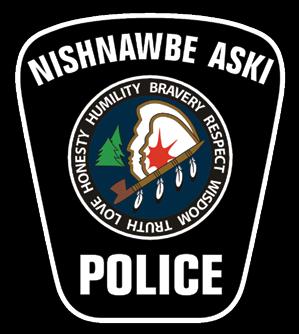 Roland Morrison Chief of Police
Roland Morrison Chief of Police
1
OUR TERRITORY
Nishnawbe Aski Nation
Nishnawbe Aski Nation (NAN) evolved out of Grand Council Treaty #9, which was established in 1973 as the regional organization representing the political, social, and economic interests of 49 First Nations in Northern Ontario who are signatories to Treaty No. 9 and Treaty No. 5 (in Ontario). In 1982, the name changed to Nishnawbe Aski Nation. The main objective of NAN is to represent the social and economic aspirations of NAN people at all levels of government in Canada and Ontario until such time as real effective action is taken to remedy the problems and challenges experienced by the people of Nishnawbe Aski and to permit the forces of self-determination to establish spiritual, cultural, social, and economic independence.
NAN’s traditional territory, which encompasses two thirds of the province of Ontario, stretches from the Quebec border in the east to the Manitoba border in the west and from the James Bay and Hudson’s Bay watersheds in north to roughly the Canadian National Railway in the south.
NAN Territory
2
Nishnawbe Aski Nation Organizational Structure Nishnawbe Aski Nation is a political affliation of all First Nations within NAN territory. The Executive Council consists of a Grand Chief, and three Deputy Grand Chiefs. Organizational Chart Board of Directors NAN Chiefs Finance Committee Deputy Grand Chief Deputy Grand Chief Grand Chief Deputy Grand Chief Tribal Councils in NAN The majority of First Nations of NAN are grouped into seven Tribal Council areas: • Independent First Nations Alliance (IFNA) • Keewaytinook Okimakanak (Northern Chiefs Council) • Matawa First Nations Council • Mushkegowuk Council • Shibogama First Nations Council • Wabun Tribal Council • Windigo First Nations Council Some First Nations are independent of Tribal Council affliation. 3
HISTORY OF NISHNAWBE ASKI POLICE SERVICE
The Nishnawbe Aski Police Services was established as a result of a negotiated tri-partite agreement between the Nishnawbe Aski Nation, Canada and the province of Ontario.
The primary goal behind that agreement was the establishment of an Indigenous police service mandated to provide effective, effcient and culturally appropriate policing to the people in the Nishnawbe Aski area.
The Agreement was ratifed by the Nishnawbe Aski Chiefs in December 1993 and signed by the negotiating parties on January 14, 1994.
4
Phase one of the Agreement ran for a period of four years commencing April 01, 1994 in an area identifed in the Agreement as Division “A”. All existing First Nation Constable positions plus additional positions, were transferred to the NAN Police Service for a total of thirty-three.
Phase Two commenced January 1, 1998 and the eight First Nations of Wahgoshig, Matachewan, Mattagami, Brunswick House, Chapleau Ojibway, Chapleau Cree, Constance Lake and Aroland were transferred to Division “A”, Nishnawbe-Aski Police Service.
On June 1, 1998, the Nishnawbe Aski Police Service assumed policing from the former Northwest Patrol Unit, administered by the Ontario Provincial Police, except for the First Nations of Big Trout Lake, Weagamow, Muskrat Dam and Pikangikum. An Operational Transition Committee was struck to implement the orderly transfer of administrative and operational matters between the Nishnawbe Aski Police Service and the Ontario Provincial Police. On April 1, 1999 the transition was completed. Muskrat Dam later came on board.
5
Aski Police Service Board Governance
Included within the terms of the tri-partite agreement was the requirement for the creation of an independent and autonomous Police Services Board consisting of a representative from each of the Nishnawbe Aski Nation Tribal Councils.
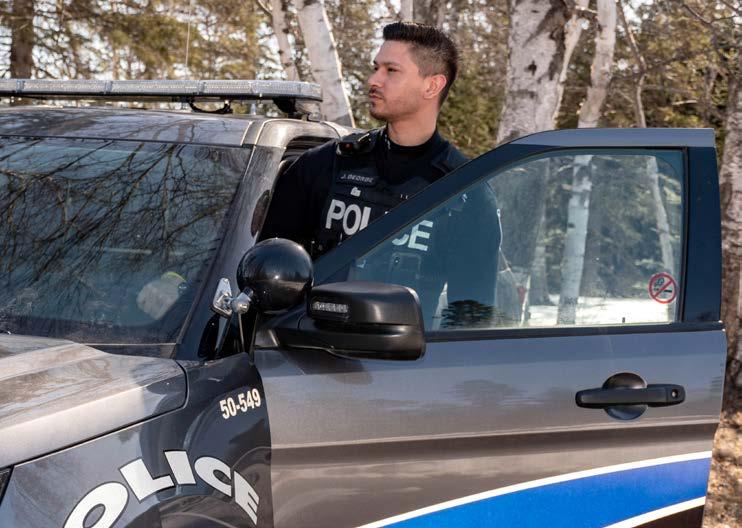
governance responsibilities of the Board are contained within the agreement and are generally consistent with the responsibilities of Municipal Police Services Boards prescribed within the Police Services Act of Ontario R.S.O. 1990, c. P-15. and with police governance principles throughout Canada.
Board Composition
Board consists of 8 Directors and 1 ex-offco appointed as follows:
appointed by Tribal Councils, one from each of the following:
First Nations Alliance
Nations Council
Council
Nations Council
Tribal Council
Nations Council
Nations within NAN
Chiefs Council)
Director appointed by NAN Executive
of the NAPS Police Services Board
The tri-partite agreement states that the Police Service Board shall be independent and autonomous and shall be responsible for governing NAPS and for providing and implementing, through the Chief of Police, planning, direction and policy for NAPS.
Nishnawbe
The
The
Eight Directors
• Independent
• Keewaytinook Okimakanak (Northern
• Matawa First
• Mushkegowuk
• Shibogama First
• Wabun
• Windigo First
• Unaffliated First
• Ex-offcio
Mandate
6

200 UNIFORM OFFICERS 30 CIVILIANS 34 LARGEST FIRST NATIONS POLICE SERVICE IN CANADA COMMUNITIES POLICED ACROSS NAN 7
UNIFORM ORGANIZATIONAL CHART Chief of Police Deputy Chief of Police North East Regional Commander Staff Sergeant Sergeants (7) Court Offcer (1) Court Offcer (1) Court Offcer (1) Peawanuck (4 Cst) Attawapiskat (12 Cst / 2 Sgt) Fort Albany (8 Cst / 1 Sgt) Kashechewan (9 Cst / 1 Sgt) Moose Factory (10 Cst / 2 Sgt) New Post (1 Cst) Wahgoshig (2 Cst) Matachewan (1 Cst) Mattagami (2 Cst) Brunswick House (1 Cst) Chapleau Cree (1 Cst) Chapleau Ojibwe (1 Sgt) Staff Sergeant Sergeants (3) Aroland (2 Cst) Marten Falls (3 Cst) Eabametoong (6 Cst / 2 Sgt) Webequie (4 Cst) Constance Lake (4 Cst / 1 Sgt) Nibinamik (3 Cst) Neskantaga (3 Cst) Kasabonika (4 Cst) Kingfsher Lake (4 Cst) Wunnumin Lake (4 Cst) Staff Sergeant Sergeants (6) Bearskin (3 Cst / 1 Sgt) Cat Lake (4 Cst / 1 Sgt) Deer Lake (4 Cst) Fort Severn (5 Cst) Keewaywin (4 Cst) Mishkeekogamang (9 Cst / 2 Sgt) Muskrat Dam (3 Cst) North Spirit Lake (3 Cst) Poplar Hill (5 Cst / 1 Sgt) Sachigo Lake (4 Cst) Sandy Lake (8 Cst / 1 Sgt) Slate Falls (4 Cst) Central Regional Commander Detective Inspector NAPS Specialty Units (1 D/S/SGT) Victim Services Professional Standards Bureau (1 Inspector) NE Crime Unit (1 D/SGT 3 D/CSTS) Intell Offcer (1 D/CST) NW Crime Unit (1 D/SGT 3 D/CST) Drugs (2 D/CSTS) Central Crime Unit (3 D/CSTS) Guns & Gangs/Pavis (1 D/CST) Criminal Analyst (1) Media (1/2 Time) (1 SGT) 1 Training ERT (1 SGT/1 CST) Recruitment
North West
Regional Commander DETECTIVE INSPECTOR DIRECT REPORTS DETECTIVE INSPECTOR DIRECT REPORTS CHIEF REPORTS *bolded communities fy in8
CIVILIAN ORGANIZATIONAL CHART Non Union Management Union Management Non Union Union Chief of Police Director of Finance Finance Administrator (2) Compensation & Benefts Administrator Inspector Northwest Region Offce Administrator Offce Assistant Court Assistant CPIC Coordinator CPIC Coordinator Offender Transport (2) Offender Transport (2) Mechanic Foreperson Maintenance Mechanic Logistics Administrator Criminal Intelligence AnalystQuartermaster Records Management Analyst IT Systems Coordinator IT Field Technician Inspector Northeast Region Offce Administrator Offce Assistant Court Administrator Court Assistant Inspector Central Region Offce Administrator Human Resources Advisor Human Resources Assistant Deputy Chief of Police Executive Assistant Board Liason & Executive Assistant 9
WHAT DID OUR OFFICERS SAY?
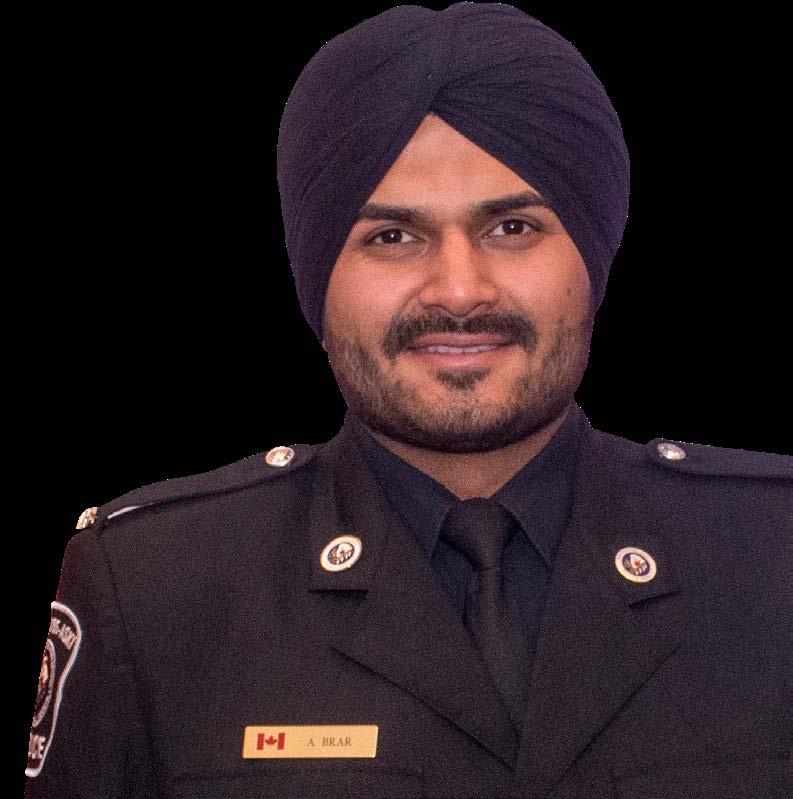
Getting supplies up to the detachment sometimes takes too long when court dates are 3-4 months apart, we need better utilization of remand fights.
Offcer ftness should be held as a priority. Especially being up north for up to 16 days at a time. Perhaps pairing funding with the band to provide a community gym or offcer gym.
iPads or tablets can be used in cruiser to provide NICHE, take audio statements in different locations, take pictures for evidence, sign statements on tablet with electronic pen.
Have a nutritionist help all members with their diets.
10
FEEDBACK FROM FRONTLINE OFFICERS 0 5 10 15 20 MORE OFFICERS COMM CENTRE 80 FACTOR FOR PENSIONS POLICE VEHICLES TRAINING RECRUITMENT LIVING CONDITIONS MORE MTGS ADMIN STAFF BETTER DETACHMENTS AWARDS CRIME SCENE OFFICER POSITIONS SPECIALTY UNITS EQUIPMENT /VEHICLES MENTAL HEALTH/CBA ITEMS PEER SUPPORT PROFESSIONAL STANDARDS BUREAU 11
FRONTLINE OFFICER FEEDBACK ON INCENTIVES FOR THE POLICE SERVICE
of offcers would like paid fights to communities, or some form of covered transportation.
of offcers asked for ftness to be an incentive in some form or fashion. Ideas include detachment at gym, discount at a ftness facility, acknowledgement of ftness achievement, or in house created ftness plans/hire a ftness instructor..
of offcers asked for a rebooted CIRST team.
offcers would like more modern offcer equipment, including dash cams, body cams, etc but also improved detachments.
offcers want a real emphasis on employee wellness.
of
of
80% 100% 100% 70% 100% 12

LOVE BRAVERY HONESTY HUMILITY TRUTH, RESPECT, WISDOM TRAINING, EQUIPMENT & SAFETY RETENTION EMPLOYEE WELLNESS RECRUITMENT STRATEGIC PLAN FOCUS I.M.A. is for the Indigenous Men’s Association. The founder of the I.M.A., Kris Morrison is a member of the Moose Cree First Nation, he is currently pursuing his Masters in Indigenous Studies at Trent University. Kris Morrison uses the Tepee as part of his traditional teachings when he facilitates workshops. * 13
RECRUITMENT OBJECTIVE NAPS IS DEDICATED TO BECOMING THE EMPLOYER OF CHOICE. IN ORDER TO ASSIST IN ACHIEVING THIS GOAL, RECRUITMENT IS UNDERGOING A COMPLETE REBOOT. NAPS STRIVES TO INSPIRE CANDIDATES THROUGH A PROGRESSIVE, EFFICIENT, FAIR AND IMPARTIAL RECRUITING STRATEGY, WHILE PROMOTING THE MISSION STATEMENT OF THE NISHNAWBE ASKI POLICE SERVICE. GOALS PERFORMANCE INDICATOR Social Media Enhancement • Show the world who is NAPS • Utilizing social media platforms to increase applications in NAN • Muscular approach to social media and make that frst impression. (hire dedicated position) • New website launched and continuous enhancements. Mobile format is developed. • Compile stats on recruitment • Track old graduates from previous classes • Outsource social media • Promote being a NAPS offcer/enhance social media presence – hire PR professional /external media specialist • Update website / vibrant pamphlets • Cadet Program • Camp NAPS or NAPS Bound – breathe new life into what was developed 14
GOALS PERFORMANCE INDICATOR
Educational Partnerships
• Dennis Franklin Cromarty, Matawa Learning Centre, and OSHKI
• Engage members in the feld to take an active and meaningful role in the recruitment of new recruits
• Communication master plan is created including public relations branding marketing and employee relations. We are PRO-active.
• Strong relationships with community – front line identify potential community members
• Applications submitted increase greatly with daily social media.
• Continuously evolving hiring process in 2019-“living”process.
Human resource strategic plan Onboarding review (interview recruits and hiring process) Increase recruitment teams
Develop Regional recruitment teams 15

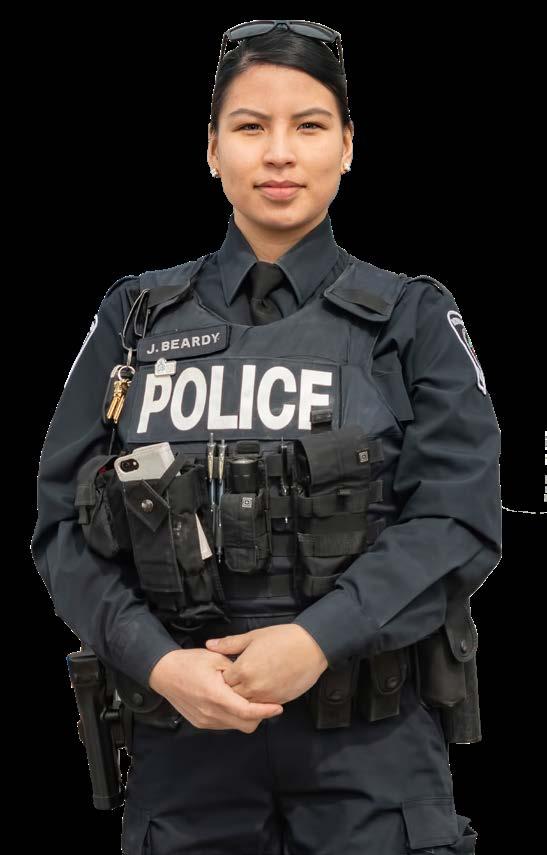
THE NAPS RECRUITMENT PROCESS APPLICATION WELCOME OFFER FROM NAPS HIRING DECISON INTERVIEW, UNIFORM FITTING & PSYCHOLOGICAL TESTING INVITATION TO INTERVIEW PROCESS BACKGROUND CHECK 16
OBJECTIVE AT NISHNAWBE ASKI POLICE WE KNOW PEOPLE ARE OUR GREATEST RESOURCE AND WE STRIVE TO RETAIN THE BEST TALENT. MANAGEMENT WILL IMPLEMENT IDEA’S THAT WILL ALLOW OUR SERVICE TO RETAIN AND ATTRACT POTENTIAL CANDIDATES THROUGH VARIOUS RETENTION STRATEGIES. RETENTION GOALS PERFORMANCE INDICATOR Succession planning (merit based promotions) / opportunities and back fll gaps while staff is absent • Improve ability to access expertise and diverse skill sets from all over NAPS – increase unit(s) • Retirements are projected and planned for • Positions are flled and operations running smoothly Accommodations • Hiring knowledgeable maintenance staff to maintain infrastructure. Increase front line offcers and their training in remote communities • Strong leadership and accountability for subordinates –• Keep in touch with less busy communities 17
OBJECTIVE NISHNAWBE ASKI POLICE STRIVES TO MAKE PRACTICAL AND EFFECTIVE USE OF ALL EQUIPMENT IN ORDER TO PROTECT THE PUBLIC. NAPS OPERATES WITH OPERATIONAL EFFICIENCY IN A CHALLENGING AND CONSTANTLY CHANGING ENVIRONMENT. TRAINING/EQUIPMENT & SAFETY GOALS PERFORMANCE INDICATOR Block training enhancement • New training facility to accommodate this initiative • Keep up with new legislation requirements and encourage strong skillset updates amongst civilians • Meet provincial standards and maintain offcer and civilian training. Training tree (established guidelines) • Training unit planning • Increase training opportunities for members Equipment audit (review all vehicles, equipment, detachments) • Ergonomic stations • Defbulators/ cruiser laptops/body & dash cams • Body x-ray machines/voice detection system • New equipment is constantly being sought. 18
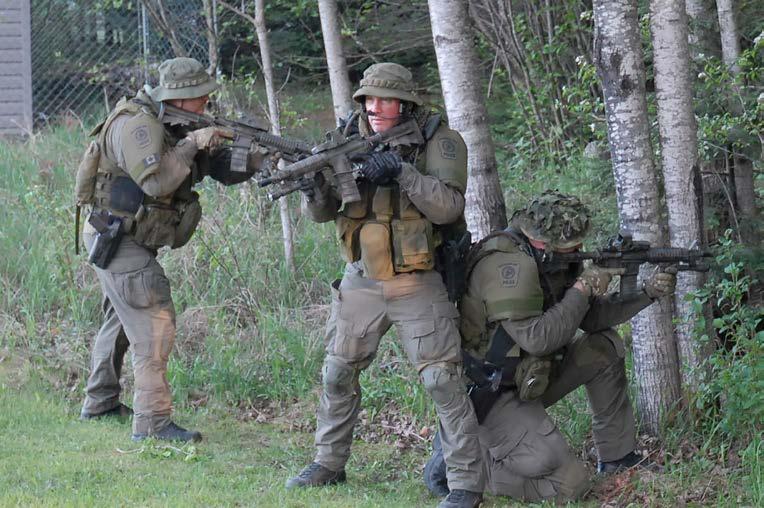
GOALS PERFORMANCE INDICATOR Maximizing technology • Video conferencing in all up to standard detachments for contact and training • Utilize technology to deliver training • With full emphasis on “better smarter use” • Audio in cells New detachments in remote communities • Negotiation team • Infuences retention 259 TRAINING SESSIONS IN 2018-2019 238 TRAINING SESSIONS IN 2017-2018 19
WELLNESS
OBJECTIVE
REINFORCING THAT OUR PRIORITY IS OUR PEOPLE AND WE MANAGE THROUGH THE LENS OF WELLNESS. WE ARE THE HEALTHIEST VERSION OF OURSELVES TO ENTER INTO THE NEW ERA OF POLICING.
GOALS PERFORMANCE INDICATOR
Fitness programming Fitness – explore how to get access and promote ftness through a strategic plan and meaningful incentives.
Reboot CIRST – Critical Incident Response Team
• Implement a wellness strategy and move the “barometer on ftness”
• Develop programs for bodyweight plans for the feld
• Fitness PIN incentives
• Human resources plan is created – only want the best
• Staff feels supported
• Build trust so that employees feel confdence in disclosing issues
• Develop a positive corporate culture which will create an environment of growth and improvement
• Create offcer friendly programs
20
GOALS PERFORMANCE INDICATOR
•
•
•
•
with an appropriate medium
•
•
•
•
•
•
•
•
feedback
work
intelligence for everyone
briefng board
great
a culture that celebrates others
Mental and Emotional health awareness training
Thirst to learn Indigenous customs
Training and HR departments are proactively planning
Incorporate into Post Aylmer/ Block training
Increase communication with employees
(video, email, teleconference)
Increase communication with department meetings
Communicate with members and provide
on
AVAIL program /HR downloads more emotional
Using revamped new internal website program –
=
communication
Improve internal recognition by promoting
accomplishments.
Stats are retained and monitored
Happier workforce – new interactive program AVAIL launched stats provided Increase specialized unit response to Major Crime
More crime unit attending major’s reduce frontline offcers mental health injuries 21
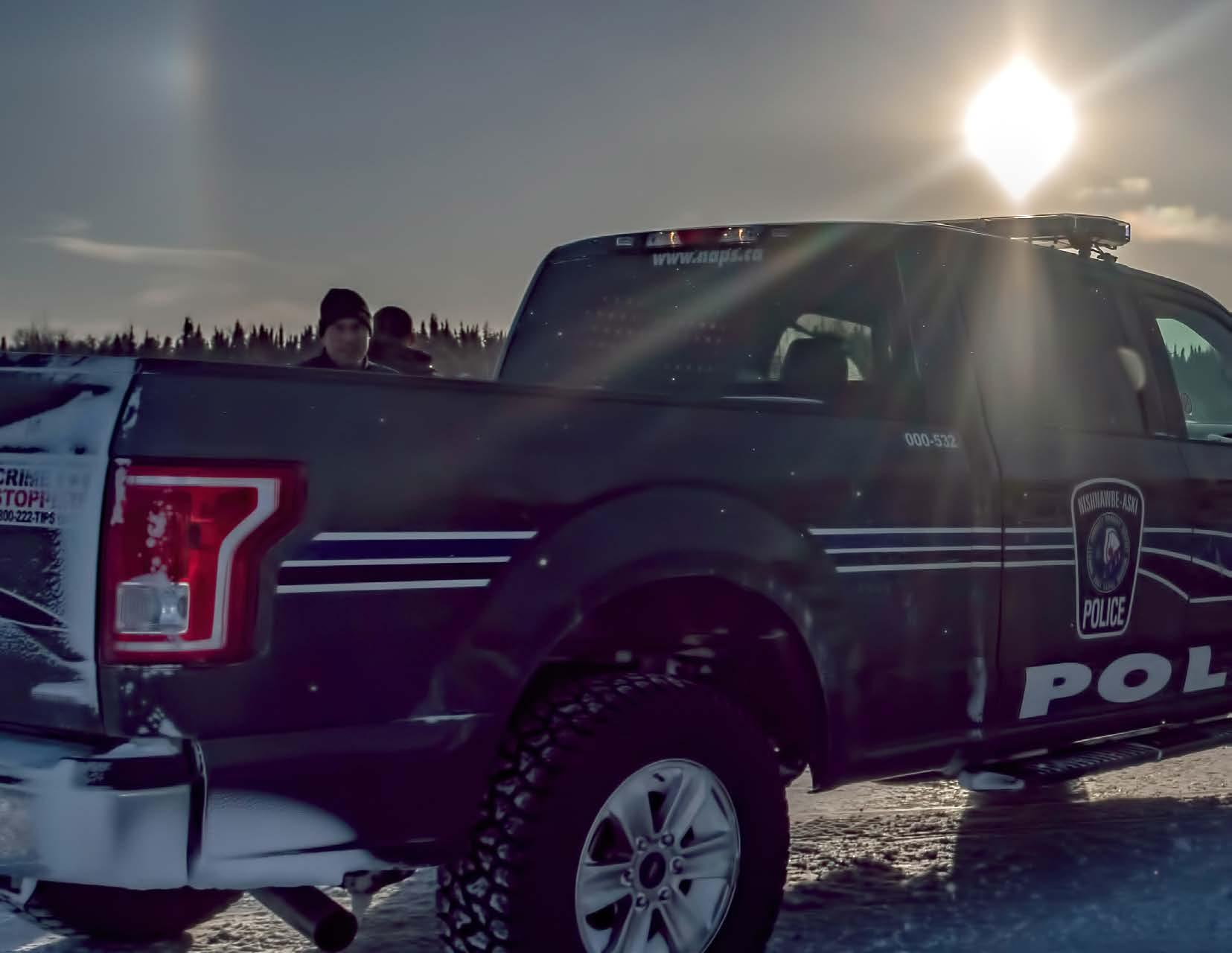
NAPS LEASED AIRCRAFT: PC – 12 (PILATUS) 9 SEATS 1,800 LBS PAYLOAD 110-135 HOURS OF FLYING TIME PER MONTH 22
CHARTERS
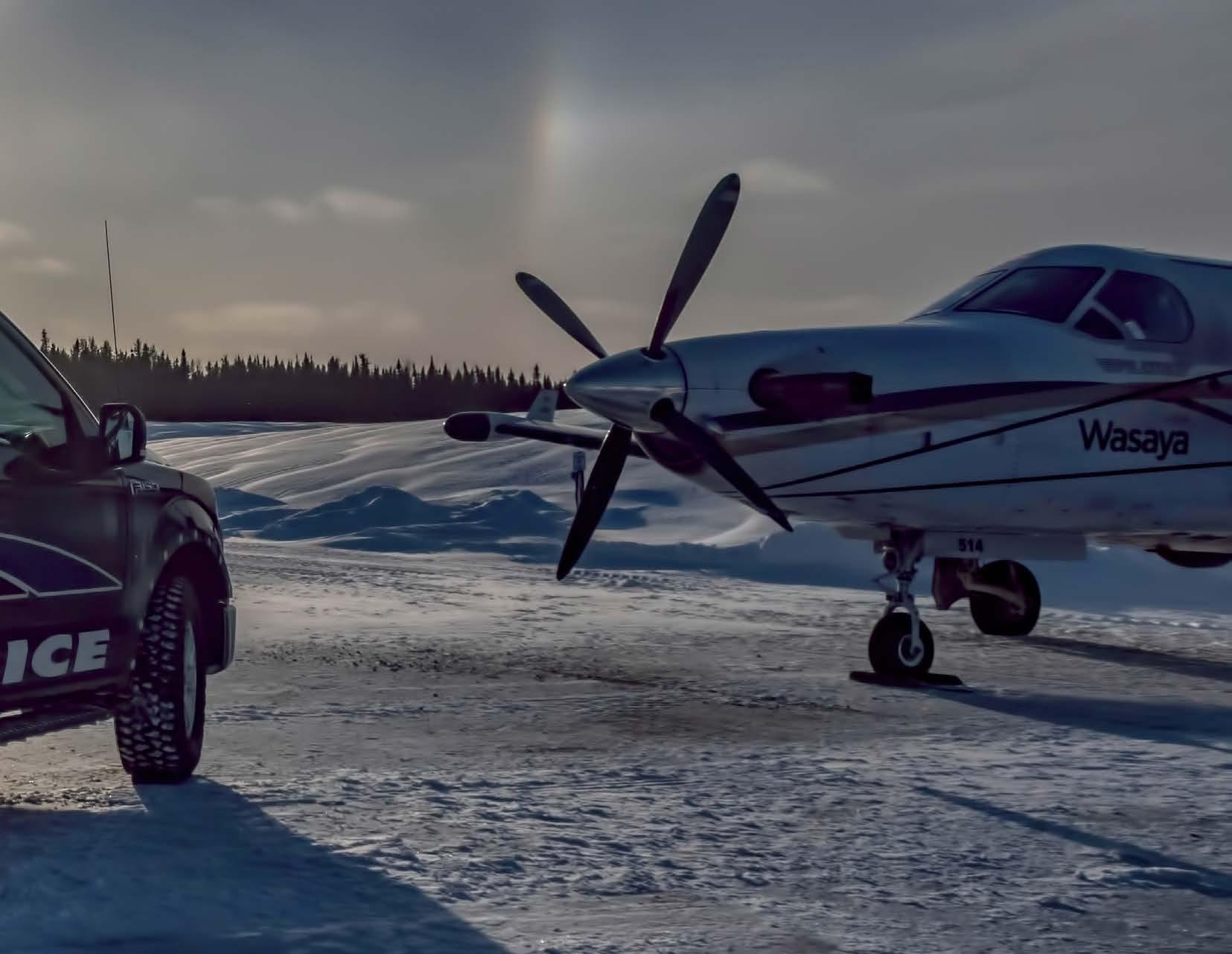
Using local aviation companies, NAPS will easily use on average 10-12 charters in one month. There are many days when NAPS has 2 charters along with the NAPS leased aircraft fying on the same day. The demand for charters has reached a critical mass to the point where the acquisition of a second plane would prove to be a more economical solution to the ever increasing demand. • The plane be reconfgured if required and seats can be physically removed to accommodate freight • The NAPS plane and charters can start as early as 5:30 am and some days not end till midnight • Passengers vary from government, dignitaries, board, contractors, prisoners, offcers, and civilian staff 25-28 FLYING DAYS PER MONTH 130 PASSENGERS TRANSPORTED PER MONTH 23

NORTH WEST REGION SIOUX LOOKOUT (NORTH WEST REGIONAL OFFICE) NORTH EAST REGION CENTRAL REGION THUNDER BAY (HEADQUARTERS) COCHRANE (NORTH EAST REGIONAL OFFICE) 17 23 24 33 13 16 32 12 3 28 22 15 29 9 27 25 5 30 20 2 14 11 21 31 18 19 4 6 7 26 10 1 8 24
1. AROLAND CONSTABLES: 2 POPULATION: 735
ATTAWAPISKAT CONSTABLES: 12 SERGEANTS: 2 POPULATION: 3,673
3. BEARSKIN LAKE CONSTABLES: 3 SERGEANTS: 1 POPULATION: 948
4. BRUNSWICK HOUSE CONSTABLES: 1 POPULATION: 852
CAT LAKE CONSTABLES: 4 SERGEANTS: 1 POPULATION: 822
CHAPLEAU CREE CONSTABLES: 1 POPULATION: 505
7. CHAPLEAU OJIBWE SERGEANTS: 1 POPULATION: 40
8. CONSTANCE LAKE CONSTABLES: 4 SERGEANTS: 1 POPULATION: 757
9. DEER LAKE CONSTABLES: 4 POPULATION: 1,354
EABAMETOONG CONSTABLES: 6 SERGEANTS: 2 POPULATION: 2,721
11. FORT ALBANY CONSTABLES: 8 SERGEANTS: 1 POPULATION: 1,100
12. FORT SEVERN CONSTABLES: 5 POPULATION: 728
13. KASABONIKA LAKE CONSTABLES: 4 POPULATION: 1,191
14. KASHECHEWAN CONSTABLES: 9 SERGEANTS: 1 POPULATION: 1,680 15. KEEWAYWIN CONSTABLES: 4 POPULATION: 821 16. KINGFISHER CONSTABLES: 4 POPULATION: 627 17. MARTEN FALLS CONSTABLES: 3 POPULATION: 810 18. MATACHEWAN CONSTABLES: 1 POPULATION: 37 19. MATTAGAMI CONSTABLES: 2 POPULATION: 586 20. MISHKEEGOGAMANG CONSTABLES: 9 SERGEANTS: 2 POPULATION: 1,967
21. MOOSE FACTORY CONSTABLES: 10 SERGEANTS: 2 POPULATION: 4,824
22. MUSKRAT DAM CONSTABLES: 3 POPULATION: 467
23. NESKANTAGA CONSTABLES: 3 POPULATION: 492
24. NIBINAMIK CONSTABLES: 3 POPULATION: 543
25. NORTH SPIRIT LAKE CONSTABLES: 3 POPULATION: 498
26. PEAWANUCK CONSTABLES: 4 POPULATION: 527
27. POPLAR HILL CONSTABLES: 5 SERGEANTS: 1 POPULATION: 684
28. SACHIGO LAKE CONSTABLES: 4 POPULATION: 969
29. SANDY LAKE CONSTABLES: 8 SERGEANTS: 1 POPULATION: 2,296
30. SLATE FALLS CONSTABLES: 4 POPULATION: 293
31. WAHGOSHIG CONSTABLES: 2 POPULATION: 128

32. WUNNUMIN LAKE CONSTABLES: 4 POPULATION: 706
33. WEBEQUIE CONSTABLES: 4 POPULATION: 943
LEGEND Indigenous Communities Head uarters and ffces Nishnawbe Aski Nation Boundary Police Regions
2.
5.
6.
10.
25








 Roland Morrison Chief of Police
Roland Morrison Chief of Police












